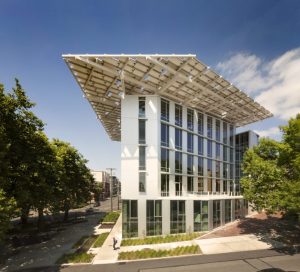What will the building materials of the future look like?
The easy answer is that most will probably look a lot like those of the past. But on slightly closer inspection, we know that building materials can change quite rapidly. That can be in response to design trends or it can be in response to the emergence of new aged materials which offer more desirable properties.
But what most of us don’t expect, and which can even seem somewhat bizarre, is the idea of creating structures out of living materials. I recently read this article which looks at “Five ways buildings of the future will use biotech to become living things”.
Some of the ideas seem far-fetched, especially suggestions for buildings that grow, heal, breathe, have immune systems and even stomachs.
But contrast these innovative developments with the reality of traditional building materials.
Mud was once a standard material, along with sticks in ‘wattle and daub’ construction and in fact bricks are still essentially made from mud, albeit with some post-processing.
Wood is a wonder material which was once (generally quite recently) living, and Portland cement starts out as limestone, itself made up of the skeletal remains of marine organisms.
And drywall is made from paper and gypsum.
The point is that upon closer inspection the materials in common use today have unusual or unexpected origins, so nothing should be ruled out.
And bear in mind that windows and doors have seen all kinds of materials used in their creation, from wood, to steel, to aluminum and various plastics and composites.
With increased interest from building owners (and the general public) in environmentally responsible building solutions, we’re seeing the introduction of developments like ‘green roofs’. By incorporating plants into the design of a building, there’s an aesthetic benefit as well as an environmental boost.
When it comes to windows and doors, there’s considerable interest in the potential for the incorporation of using building facades to generate energy like those used at the Lincoln Financial Field in Philadelphia. In the case of this it’s wind turbines and ‘traditional’ solar collectors serve as an energy source as well as a decorative cladding. But just imagine the potential if all glazing and cladding generated energy.
Already possible. While spandrel glass areas, as opposed to vision glass, is the obvious starting point for glazing which could generate power, it’s just a matter of time before the technology matures. Soon enough, it may well be that shining glass office towers generate more power than they consume.
Evolution
What we can be certain of, one way or another, is that building materials will continue evolving and changing. Given the research outlined in the ‘Five ways’ article, it is not beyond the realm of possibility that we might incorporate living elements into our structures, beyond the obvious of potted plants.
We could very well gain self-healing concrete or ‘grow your own’ toadstool homes, or even better, get buildings with immune systems (which would make a most welcome change from ‘sick building syndrome’).
After all, it just takes a quick look at history to appreciate that change is inevitable. Except, perhaps, from a vending machine.
Buildings that grow – Hy-Fi installation in New York

